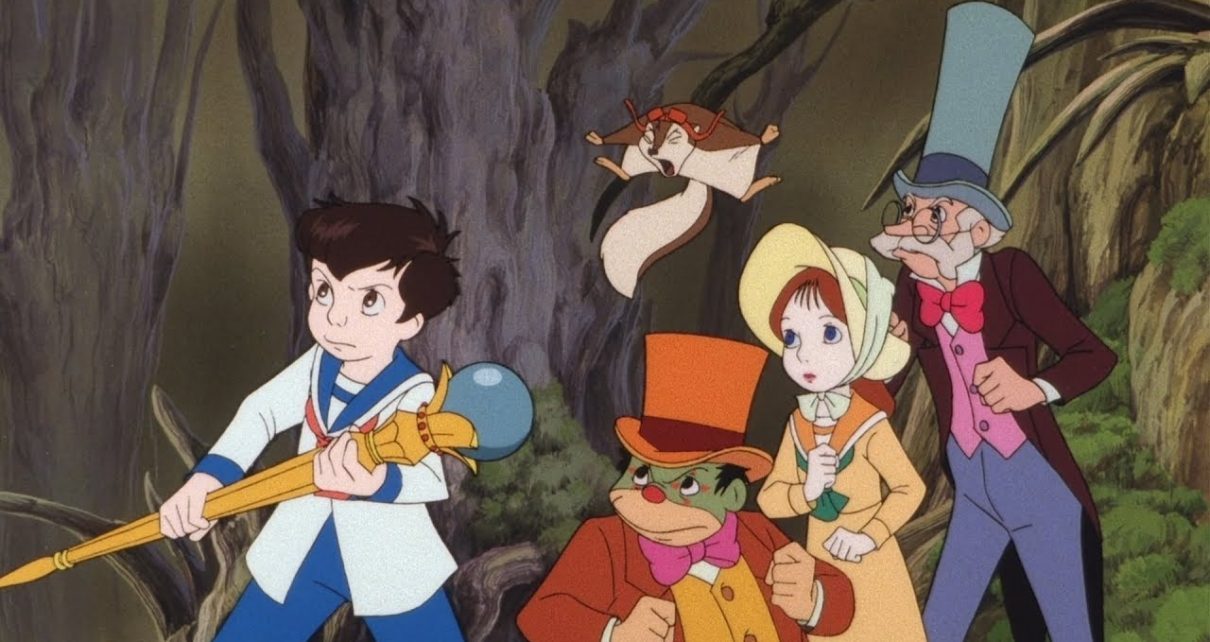Some movies stick with you, for whatever reason: images, sounds, a snippet of dialogue, a memorable character. Little Nemo: Adventures in Slumberland, based on American cartoonist Winsor McCay’s early-twentieth century comic strip, is one of those films, a collection of whimsical pictures that have stuck in the minds of children (most of whom are now adults) since it first came out thirty years ago in Japan on July 15, 1989.
In Japan, Little Nemo promptly bombed at the box office, and did so again for its U.S. release in 1992. The movie itself had a troubled production history, taking almost the entire 1980s to complete, owing in part to the technical and creative hurdles involved with collaboration between Japanese and American studios and writers. A succession of impressive individuals worked on the film—Hayao Miyazaki and Ray Bradbury, to name just two—and its animation was handled by the storied Tokyo Movie Shinsha (TMS), which also produced the classic anime Akira and many other films and series. After Little Nemo, producer Yutake Fujioka retired, and TMS moved on to animate for Western titles like Animaniacs and Batman: The Animated Series. It never again produced a feature film like Little Nemo.
To be fair, I first remember seeing the movie in full not in the early 90s but in 2004, when I watched the DVD release with a good friend. Several of the sights, though, were familiar somehow, as if I’d seen it before when I was younger. When I viewed it again for its thirtieth birthday, I experienced the same sensation, accompanied with some joy, like seeing an old friend again. In short, watching the film feels a bit like entering or experiencing a dream.
That dreamlike quality is itself reinforced by the plot of the film. Nemo, a young boy, falls asleep in his home, apparently set somewhere in the New York City area of the early 1900s. As he slumbers, his bed lifts up and flies out of his window into the air, carrying him and his adorable flying squirrel, Icarus, to Slumberland. There, adventures ensue after he is named heir to King Morpheus and made a playmate of Princess Camille’s. Shortly after, Nemo is tricked into releasing nightmares by the kingdom’s troublemaking, cigar-smoking clown, Flip, and he must right his wrong by defeating the darkness and saving the kingdom.
The story, it must be said, is nothing special. It’s a prosaic, predictable, unsurprising children’s movie. Yet it’s so much fun to watch! Colors burst through the screen from lush, fantastical landscapes populated by creative and humorous dream characters, often animals. In this world, a giant bug operates the elevator, a frog drives the chariot, “crocogators” are friendly, and soldiers ride zebras. It’s a pure children’s fantasy come to life. The animation is fluid and whimsical, reminiscent of 1930s American cartoons, with a hand-drawn beauty that still impresses thirty years on. Put simply, Little Nemo is a joy, and in some ways tips its hat to the likes of Fantasia and foreshadows some of Miyazaki’s own later work. Any fan of those would enjoy this, too.
As an adult watching it now, though, I couldn’t help but notice, perhaps cynically, some existential yearnings for escape. (Should all good fantasy give this impression?) Nemo’s father, some sort of businessman, is forever promising to take him to the circus (or anything fun) “tomorrow,” and takes little interest in his feelings. His mother, meanwhile, insists that he follow the rules. Nemo’s dream adventures, then, serve as an alternative world for Nemo to become courageous, daring, and—most importantly—be paid attention to. They’re validation.
Some of the lyrics to the opening sequence in particular are striking: “What kind of dream will you dream, Little Nemo?” and “Where will you go? Do you know, Little Nemo?” and, most tellingly, “I’d give a lot, all I’ve got, just to go where you go. Oh, Little Nemo I want to be there, too.” Discovering those themes during a re-watch was surprising, but great creations often have depth and layers imperceptible at first sight—in this case, to a child. That depth, and the pure joy of watching, make Little Nemo and its thirtieth anniversary well worth celebrating.
Thanks for reading The Dot and Line, where we talk about animation of all kinds. Don’t forget to follow us on Twitter and sign up for our newsletter.





